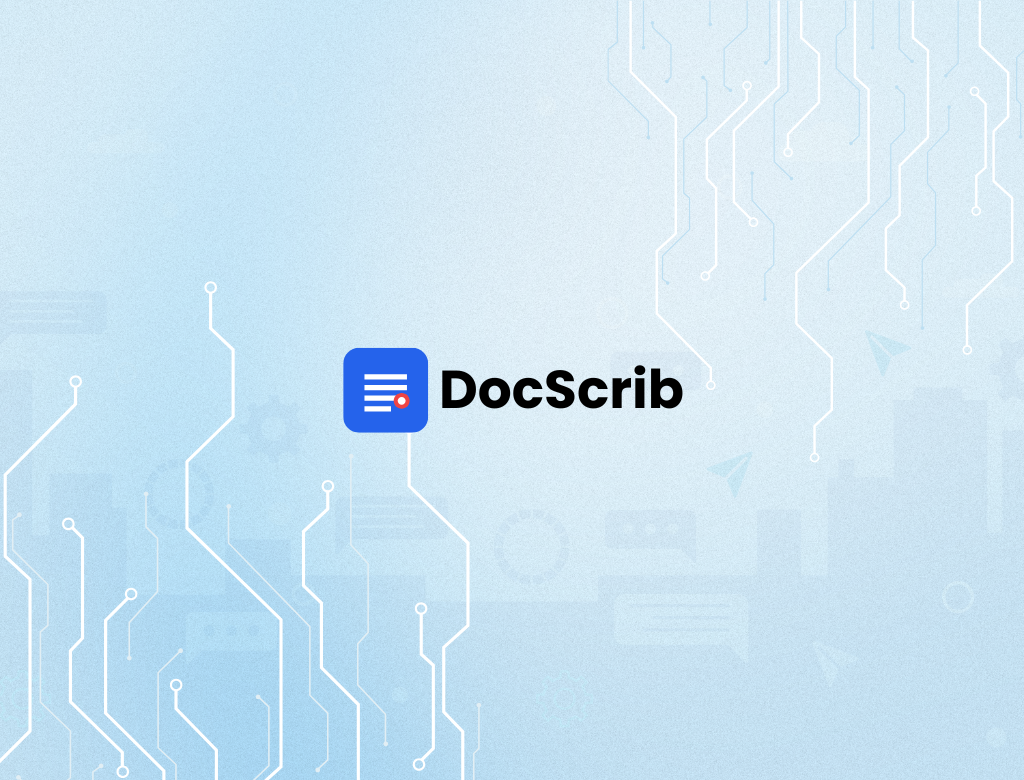By Team DocScrib | June 2025
“I didn’t go to med school to spend 3 hours a day on charting.”
— Dr. Raymond Liu, Primary Care Physician
In the post-pandemic landscape, the physician’s time has never been more precious. Rising patient volumes, shrinking margins, and an overwhelming EHR burden have made AI medical scribes an essential tool—no longer a luxury, but a necessity.
Clinicians across specialties are now adopting AI scribes to reclaim their time, reduce burnout, and restore the sanctity of the patient encounter.
So, who’s leading the charge in 2025? Below are the top 5 contenders—and a closer look at why DocScrib stands out as the best choice for forward-thinking practices.
🏆 1. DocScrib – Built for Clinical Excellence, Designed Around You
What makes it different?
DocScrib is more than just a note-taking assistant—it’s a specialty-aware, ambient AI scribe that adapts to each provider’s clinical style.
✅ Ambient listening, zero disruption
✅ Generates SOAP or custom templates instantly
✅ Integrates with major EHRs
✅ HIPAA-compliant & multilingual
✅ Tailored for over 12 medical specialties
“DocScrib understands my flow. It’s like having a silent resident writing my notes.”
— Dr. Nisha Arora, Cardiologist
Best for: Providers who want highly accurate, structured notes without dictation, and a team that actively evolves with clinical feedback.
2. Freed AI – Simple, Efficient, Lightweight
Freed offers a minimal UI and integrates smoothly into existing workflows. It listens to the patient-doctor conversation and generates basic notes, making it a good entry point for solo practitioners or startups.
Strengths:
-
Lightweight interface
-
Easy setup
-
Decent note formatting
Limitations:
-
Lacks customization
-
Limited specialty nuance
-
No live editing or feedback loop
Best for: Quick setup and general outpatient workflows.
3. Nabla – Stylish and Startup-Friendly
With a focus on design and user experience, Nabla has become popular in Europe and telemedicine-first settings. Its voice-to-text engine performs reasonably well, especially for conversational transcripts.
Strengths:
-
Good UI/UX
-
Quick summaries
-
French-English language support
Limitations:
-
Less accurate for complex clinical scenarios
-
Lacks full SOAP structure
-
Weak EHR integration options
Best for: Digital-first clinics and virtual care teams.
4. Chartnote – Dictation with Smart Templates
Chartnote focuses on speech-to-text with templated inserts, combining traditional dictation with automation. It’s particularly helpful for physicians who prefer to speak their notes out loud but want automation to clean things up.
Strengths:
-
Smart phrase libraries
-
Dictation-style flow
-
Integrates with Dragon Medical
Limitations:
-
Manual initiation
-
Not ambient or passive
-
Learning curve for templates
Best for: Physicians used to voice dictation and custom macros.
5. Heidi – Nurse-Centric, Simple Use Cases
Heidi is popular among NPs and PAs, offering template-based note suggestions and user-generated prompts. It’s not fully ambient but supports common workflows well.
Strengths:
-
Easy for quick notes
-
User-driven templates
-
Affordable plans
Limitations:
-
Lacks ambient listening
-
Narrower medical scope
-
No robust EHR integration
Best for: Nurse practitioners and clinics needing basic AI-assisted note help.
Why DocScrib Is the Gold Standard in 2025
Unlike tools that require dictation or template management, DocScrib’s ambient AI engine listens silently in the background, understands specialty-specific dialogue, and outputs EHR-ready notes in real time.
Its AI is trained across diverse clinical encounters—from dermatology and pediatrics to emergency care and behavioral health—allowing it to match the tone, structure, and terminology expected in real-world settings.
And with multilingual support, a constantly evolving feedback model, and real-time HIPAA-safe documentation, it’s clear:
DocScrib isn’t just a tool—it’s a clinical ally.
Final Thoughts
If 2024 was the year AI scribes gained traction, 2025 is the year they become indispensable. While several tools are vying for attention, DocScrib emerges as the most adaptive, precise, and clinician-centered platform on the market today.
Because in healthcare, documentation should never come at the cost of connection.
💡 Ready to try DocScrib? Schedule a personalized demo at docscrib.com
📬 Want clinical note templates by specialty? Join our newsletter for weekly downloads.
